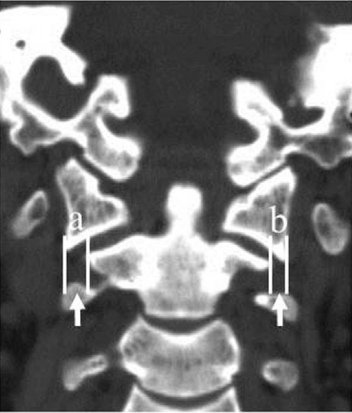Objective
The aim of this study was to assess the effect of transverse atlantal ligament (TAL) integrity on clinical and radiological outcomes in patients with unilateral sagittal split fracture (USSF) of the C1 lateral mass (LM).
Methods
Twenty-six consecutive patients (16 men and 10 women; mean age: 52 years (range: 32–69)) with C1 LM USSF were included in this study. Sixteen were TAL injury group (nine of type I injuries and seven of type II injuries according to Dickman's classification) and ten were TAL intact group. All cases were conservatively treated with a rigid brace for TAL intact or by halo-vest stabilization for TAL injury for three months. The mean follow-up was 16 months (range, 12–47 months). The results were compared with radiological assessment of fracture healing, LM displacement and Neck visual analog scale.
Results
At the last follow-up, for TAL intact group, total LM displacement (LMD), unilateral LMD of fracture side, atlanto-dental interval, basion-dental interval, clivus canal angle, and atlanto-occipital joint axis angle were maintained compared to initial presentation. However, for TAL injury group, all radiological parameters were worsened. The worsening of radiological parameters was more severe in type I injury than type II injury except for total LMD and unilateral LMD. Neck visual analog scale significantly decreased and patient's satisfaction was higher in TAL intact group compared to TAL injury group.
Conclusion
Conservative treatment for USSF of C1 LM with TAL injury failed to achieve healing of the fracture, which resulted in lateral displacement of C1 LM. This caused coronal and sagittal malalignment of occipitocervical junction, resulting in unsatisfactory clinical outcomes. Our results suggest that early surgical stabilization should be considered in USSF of C1 LM with TAL injury, especially type I injury. However, conservative treatment may be sufficient for a USSF of the C1 LM with TAL intact.
Level of Evidence Level III, Therapeutic Study.



.png)
.png)

